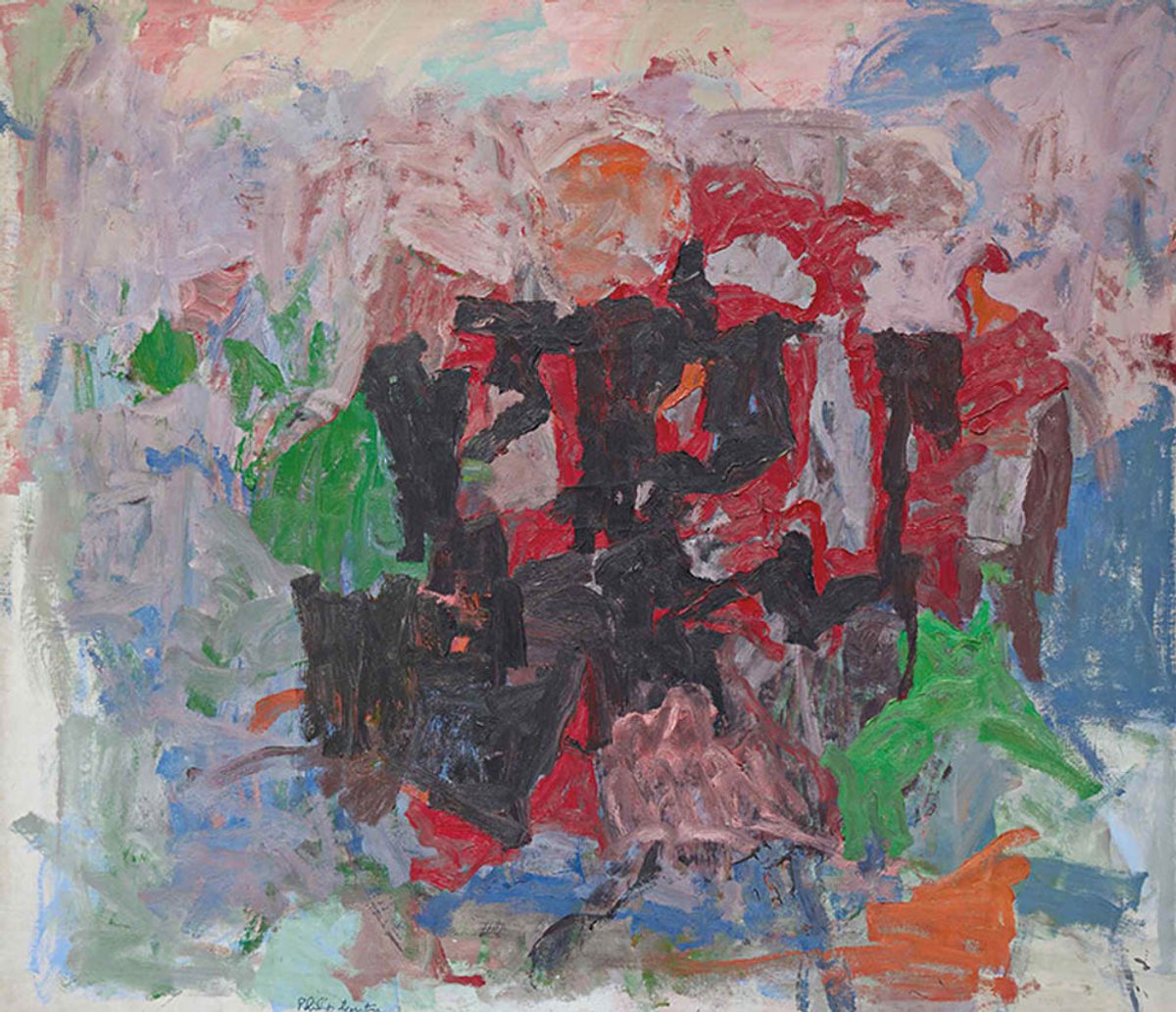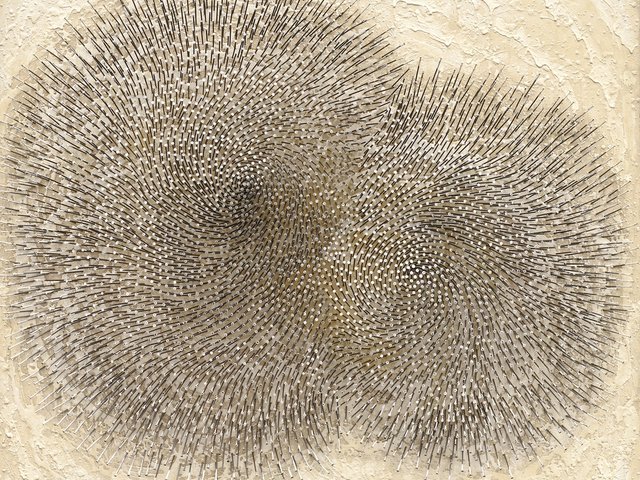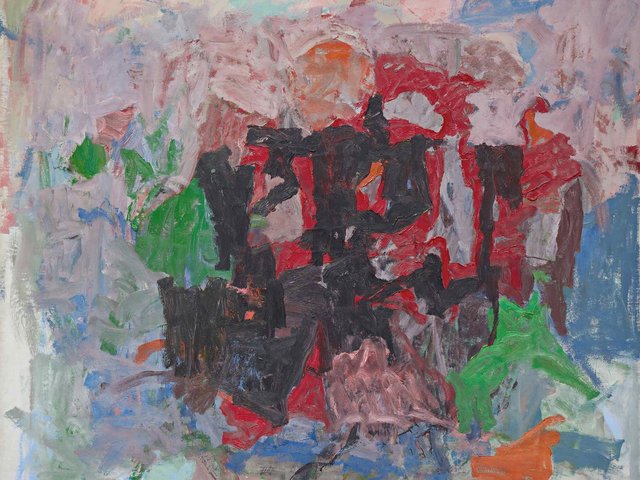Philip Guston, Nile (1958)
Modern evening auction, Sotheby’s New York, 17 May
Estimate: $20m-$30m
This Abstract Expressionist painting carries the highest ever estimate for a work by Philip Guston—his auction record stands at $25.9m, for To Fellini (1958) at Christie’s New York in 2013. Nile has been in the collection of the Dallas-based couple Peter and Edith O’Donnell for more than 40 years. The sale coincides with the opening of the exhibition, Philip Guston Now at the Museum of Fine Arts, Boston (1 May-11 September). It was postponed in late 2020 by the four museums behind the show—the Tate; National Gallery of Art, Washington DC; Museum of Fine Arts, Boston; and the Museum of Fine Arts, Houston—owing to “the racial justice movement [following the death of George Floyd]… in addition to challenges of a global health crisis”.
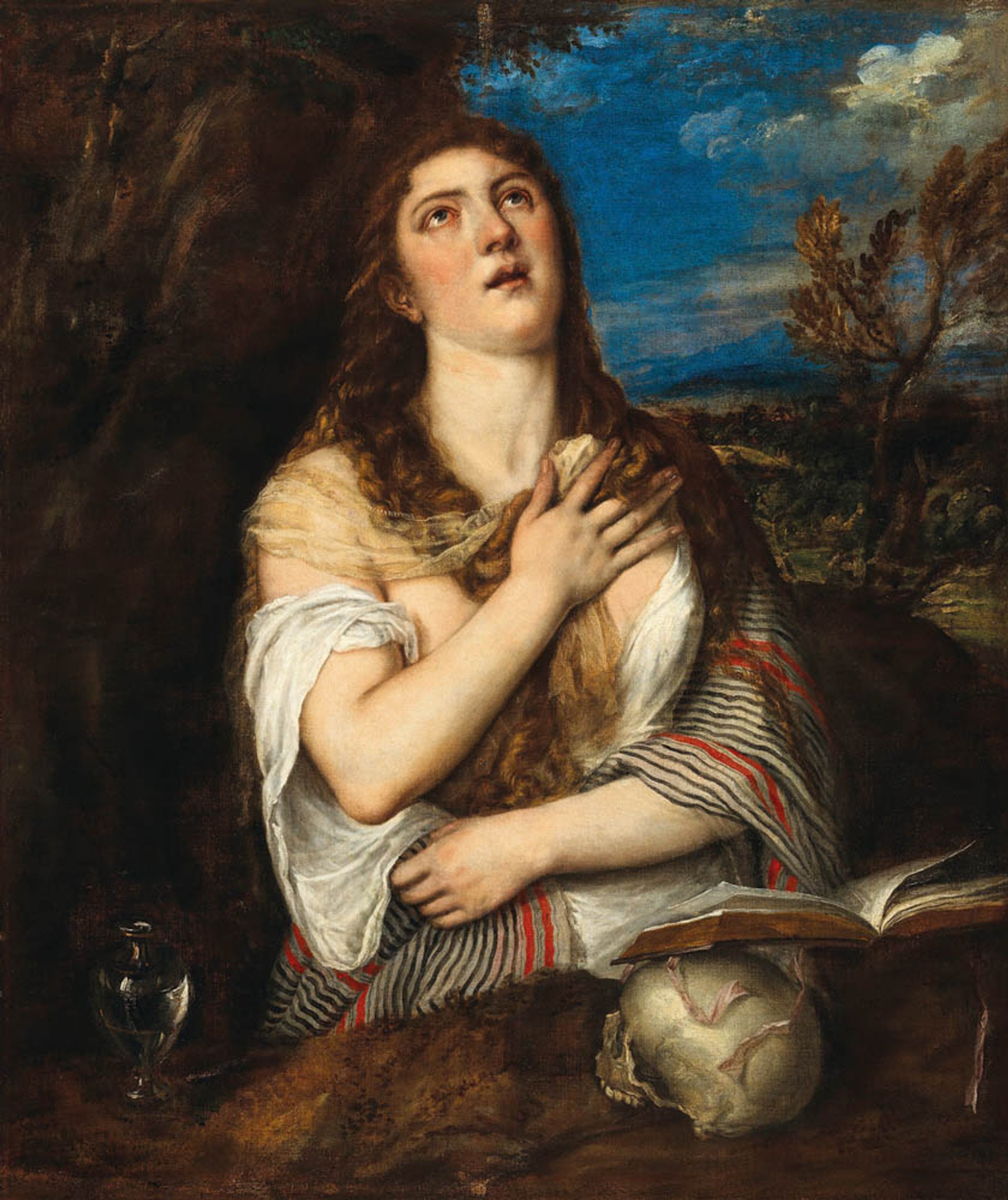
Dorotheum
Titian, Penitent Magdalene (around 1555-60)
Old Master Paintings, Dorotheum, Vienna, 11 May
Estimate: €1m-€1.5m
This sumptuous Titian, depicting the penitent Mary Magdalene, was thought to be lost for nearly two centuries before being rediscovered last year. Dated to between 1555 and 1560, it counts among its illustrious former owners Philippe II, Duke of Orléans (1674-1723) and Christina, Queen of Sweden, who in 1654, aged 28, abdicated her throne, converted to Catholicism, and moved to Rome, taking her works of art, very likely including this picture, with her. The catalogue essay surmises that it is “most probable” that the painting was originally in the collection of the Holy Roman Emperor Rudolf II in Prague and arrived in Sweden after the Sack of Prague in 1648 at the end of the Thirty Years War. It closely resembles another work by Titian on the same subject, dated 1565, which is owned by the State Hermitage Museum in St Petersburg. This painting is being sold by a private European collector, whose family has owned it for three generations. It has been authenticated by Paul Joannides, emeritus professor of art history at the University of Cambridge.
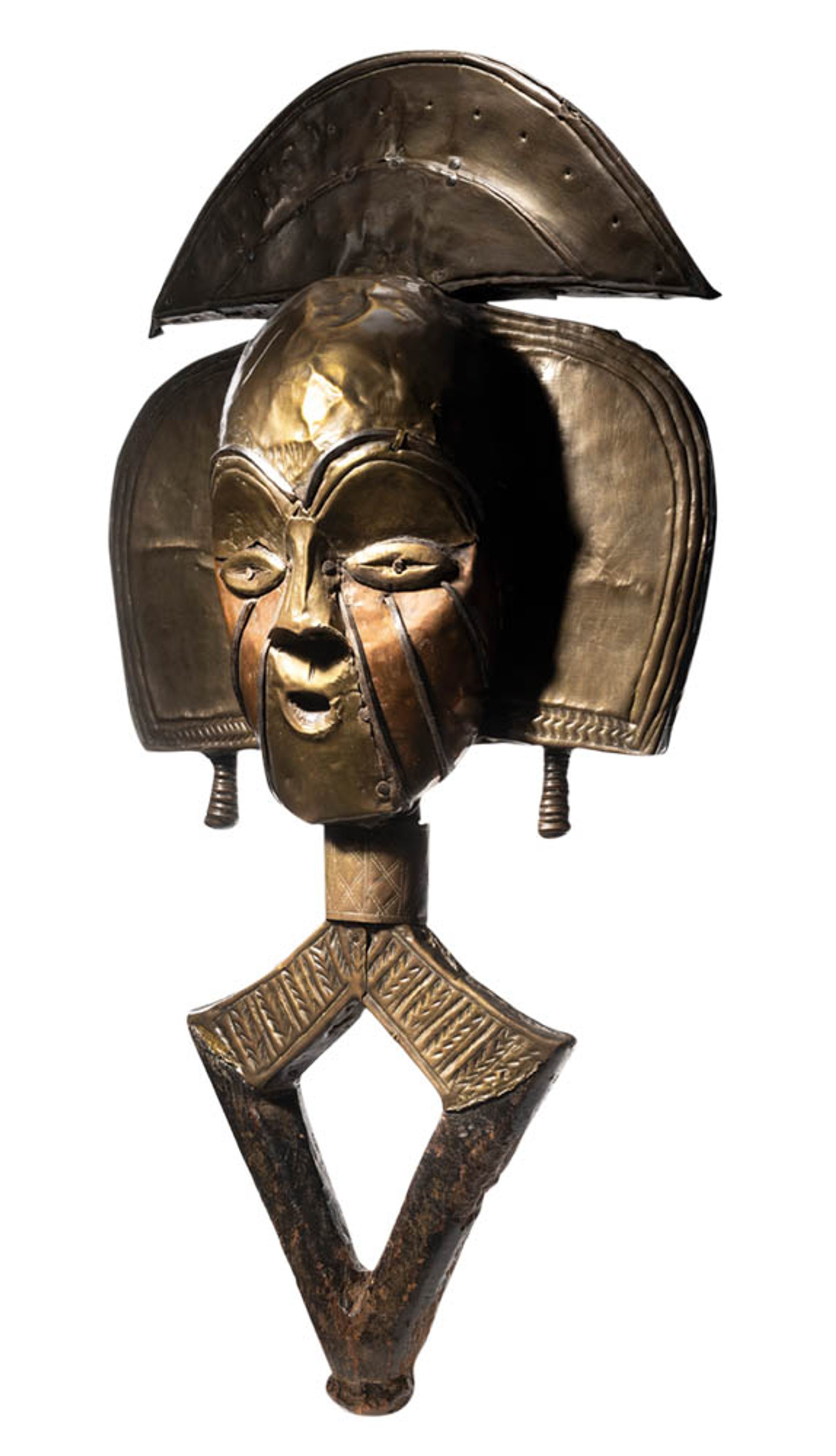
Vincent Girier Dufournier
Kota-Ndassa reliquary figure, Gabon
Guy Laliberté Collection, Christie’s, New York, 11 May
Estimate: $400,000-$600,000
Guy Laliberté may be best known as the co-founder of Le Cirque du Soleil, but he is also a keen collector of traditional African art and this month is selling 60 items from his collection at Christie’s. A highlight is this Ndassa-style Kota reliquary figure from Gabon, a deceivingly complex sculpture of just over two-feet-high whose creator would have been both expert in wood carving as well as the metallurgic arts, including iron, copper and brasswork. The different metals were typically used to accentuate the reliquary’s features—red copper gives a lifelike flush to the cheeks, iron lends weight to the arched brows and brass to the remaining surfaces.
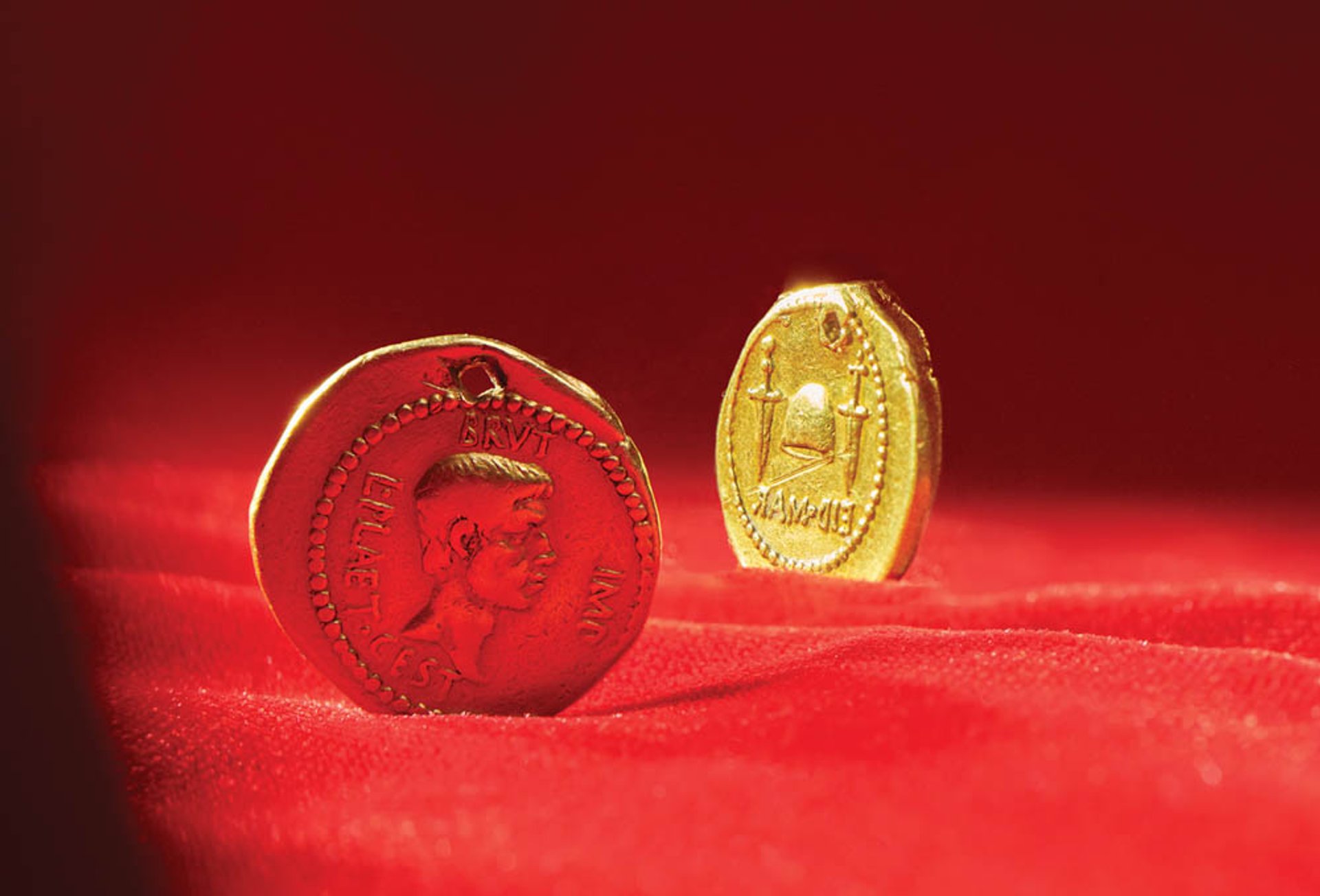
Courtesy of Numismatica Ars Classica
Marcus Junius Brutus, gold Eid Mar coin (around 43-42BC)
Numismatica Ars Classica, Hotel Baur au Lac, Zurich, 30-31 May
Estimate: in excess of £1.5m
This ancient gold coin is possibly one of the grimmest souvenirs to come up for auction in recent memory. According to the rare-coin auction house Numismatica Ars Classica, the coin was minted by Marcus Junius Brutus to commemorate the assassination of Julius Caesar—and it is rumoured that it was worn by one of assassins. Known as the “Eid Mar” (Ides of March), the coin is one of only three gold examples to exist and has been on loan to the British Museum for the past decade. The head features a bust of Caesar’s once friend and betrayer Brutus surrounded by an inscription that distinguishes him as an “acclaimed military victor”. The reverse shows two daggers, meant to represent Brutus and his co-conspirator Cassius, bookending a cap that symbolises the liberation of
Rome from a tyrant. A similar coin sold in London in 2020 for around $3.2m.


